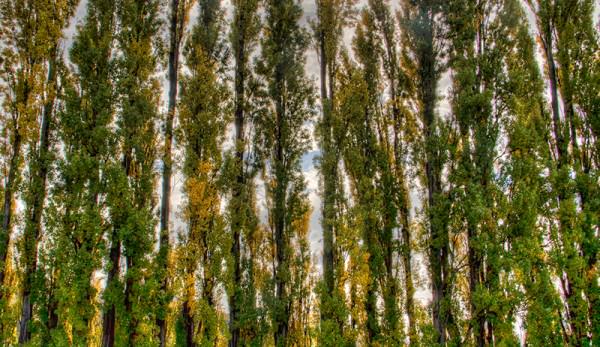
Anyone that has lived on a farm with wide-open fields knows that wind can be troublesome. Sweeping across the landscape and reaching high speeds, wind can cause small problems—like knocking things over, blowing things around, and putting a strain on unprotected trees and buildings—but it can also cause more significant issues. For example, cold winter winds can blow against your house, making it colder and forcing your heating system to work harder to keep you warm.
As a result, making an effort to reduce wind levels can not only eliminate minor annoyances (no more feedbags getting loose and playing catch-me-if-you-can across the yard!), it can also improve the energy efficiency of your house and lower heating costs during the winter. Fortunately, by planting trees in windbreak rows, reducing wind levels is a straightforward and manageable task.
There are many methods and suggestions for choosing a location to plant windbreak trees and the number of rows you’ll need to ensure good protection from the wind, but the wheres and hows comes second to the question of which types of trees you should plant. Not all trees are equally suited to serving as windbreaks, with some being too delicate and some being too slow-growing to provide fast protection, and with so many trees to choose from, finding the perfect tree can be a challenge. To help you sort through the options, here are five trees that make excellent windbreaks.
1. Eastern Red Cedar
These attractive trees don’t grow to very tall heights, but they grow in a thin, conical shape with lots of branches close together, making them excellent for stopping wind. They’re a common choice for multi-row windbreaks, where their smaller size makes them a great companion for larger trees like red pines (see below.) Best of all, eastern red cedar is found across wide portions of the eastern United States, growing as far north as Wisconsin and Michigan and as far south as Texas and Alabama.
2. Northern White Cedar
Another respected windbreak tree is the northern white cedar, a close relative of the eastern red cedar. As its name implies, the northern white cedar is found primarily in the northern United States and Canada, but in their range, they are an exceptional windbreak tree. Capable of growing very tall—heights of 100 feet or more are possible—they grow in a conical shape with branches that often extend all the way to the ground, enabling them to block wind across their entire height.
3. Lombardy Poplar
Although not generally recommended as a top-notch windbreak tree, if aesthetics are important and you’re looking for an attractive, stately tree that can help reduce wind levels, lombardy poplars might be the tree for you. Thanks to their unusual shape—very narrow and pointed, with branches growing sharply upward—they can be planted very close together, and as broad-leafed deciduous trees, they have a much different appearance than coniferous trees, like cedars and pines.
4. Red Pine
I might be a little biased since I have personal experience with red pines as windbreak trees, but I am continually amazed at how well these trees can stop the wind. These quick-growing trees—also known as Norway pines—reach an impressive height in a short amount of time, and I can vouch for the fact that they can reduce powerful winds to gentle breezes in impressive fashion. They do have some disadvantages, as well—they can be messy, dropping dead branches across your yard, and their natural habitat covers only Canada and the northern United States—but I’ve found that on the whole, they do an excellent job as windbreak trees.
5. Many Other Pine Trees
Pine trees of one type or another are found throughout the United States, and many—including eastern white pine, ponderosa pine, and loblolly pine—are great for windbreaks because they grow fast and keep their needles all year round. No matter where you live, you should be able to find a pine tree to suit your windbreak needs!




